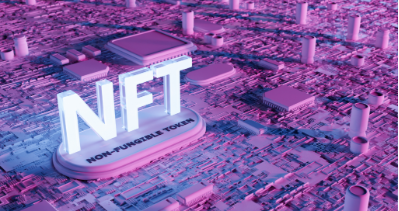Artificial Intelligence and Blockchain Technologies and Their Impacts on Brand Protection
In recent years, developments in digitalization have started to make crucial impacts on many fields, including intellectual property, from creation to monetization and enforcement levels. Brand owners and brand protection professionals are heeding updates in artificial intelligence (AI) and blockchain-based technologies such as smart contracts, metaverses and non-fungible tokens (NFTs), with total market trading volume of approximately $12.13 billion only for the first quarter of 2022 (DappRadar 2022 Q1).
While regulations are still lacking for these burgeoning technologies, there are already some remarkable studies about their effects on IP enforcement. However, before diving into the details, a brief mention of their technical aspects can shed some light on their functions and help to better understand their role in the IP ecosystem.

AI can be defined as the ability of a digital computer, or computer-controlled robot, to perform tasks commonly associated with intelligent beings. AI systems are understood as software that has machine learning, logic, and knowledge-based and/or statistical approaches, which can generate outputs influencing the environments they interact with (European Commission’s Proposal for AI Act, 2021). Blockchain is a type of distributed ledger technology where the entries/transactions are recorded as blocks and encrypted in a way the transaction chain can be traced but not changed. NFTs are one of the most popular digital assets that use blockchain technology and smart contracts and these tokens are unique; in other words, cannot be replaced.
Due to the increasing needs, competent authorities started to conduct studies by examining the IP related aspects of these technologies. One of the recent studies— “Study on the Impact of Artificial Intelligence on the Infringement and Enforcement of Copyright and Designs report” (EUIPO, 2022)—that analyses use areas and effects of AI technologies, by providing 20 different scenarios, was published by the European Union Intellectual Property Office in March 2022. The impact of these technologies on IP is described as a “double-edged sword” since they help to protect and enforce the rights, but they can also be used to violate the same (see Understanding Artificial Intelligence and Enforcement of Rights with John Zacharia).
As thoroughly discussed within the World Intellectual Property Office’s white paper on blockchain technologies and IP ecosystems (WIPO, 2022), blockchain technologies can be useful tools for brand owners.
As the white paper suggests, these technologies can generate tamper-proof documentation with a precise date and time and such evidence can be submitted to the IP Offices or Courts during the enforcement of rights. They can be used to provide proof for trademark use in opposition or non-use cancellation actions as well as for distinctive characters of trademarks by reducing the expenses of such process. Thanks to these technologies, brand owners can simplify the monitoring of their intangible asset portfolios at the international level and monetize the IP rights through licensing, assignments, or with different contractual schemes where the IP right holders may have option to use smart contracts that can be automatically concluded and performed. It would also be possible to securitize IP assets via these technologies and use them as collaterals.
These technologies can also be used for the prevention of infringement of IP rights and in case of infringement, to cover damages accordingly. In this context, they can be used to create a secure and collective record of authenticity where the original product is traced through the whole supply chain for anticounterfeiting purposes. Smart contracts may help to reduce litigation, as the fulfillment of the obligations and termination of the contracts occur automatically when the specified conditions are met. These technologies can help to secure evidence and determine whether the content is used by the authorized persons and in the way the authorization granted which may be useful in case the matters evolve into legal disputes.

Among the blockchain technologies, NFTs are the rising star of 2021. Moreover, it looks like they will preserve their place in the following years, too. While functioning as a digital certificate, NFTs can serve the brand owners as authentication mechanisms and thus a tool to combat counterfeiting. What is even more appealing about NFTs are that they promise considerable revenues to brand owners in the digital markets and metaverses through direct sales and licenses. In fact, in the United States trademark applications covering NFTs was piled up to 1,263 (Baltrusatis, 2022) in 2021 and some of them have already been registered (see NFTs: What You Need to Know to Protect Copyrights).
On the other hand, this new technology is open to the potential infringement scenarios, as anyone with sufficient, technical information may use the unauthorized materials and turn them into NFTs. Unfortunately, constantly monitoring such infringing activities is a laborious process for brand owners. Moreover, there is no legal clarity on how to enforce trademark rights against unauthorized uses yet. For example, Hermes took action for infringement and dilution of its mark against the unauthorized use of Mason Rothschild as converting the well-known Birkin bags of Hermes into NFTs and listing them for sale under the name of “Metabirkins.” Likewise, Nike filed a lawsuit against StockX for sale of NFTs associated with the names and images of the Nike products. These cases are still pending, and their outcomes will be insightful to understand how current IP enforcement will find application in terms of this rapidly developing technologies (see Professional Pointer: Brand Management in the Metaverse, A Roadmap for Retailers and A New Frontier: Brand Protection and Elevation in the Metaverse).
Trademark owners in need more certainty to shape their strategies in the absence of legal certainty. In this context, inclusion of NFTs in new trademark filings and in contracts and other documents as separate digital assets while transferring, licensing, or conducting other legal transactions can help them to protect their rights—in addition to generating income from this burgeoning consumer trend.
First published by Brand Protection Professional in Jun 20, 2022.

